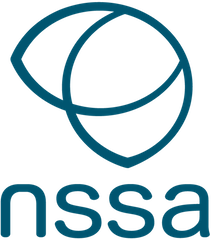PNES vs Epilepsy: it’s complicated
As I am new to the field, I thought I would begin my blog post with a small introduction about myself. I am currently studying the Master of Science in Medicine (Clinical Neurophysiology) at the University of Sydney, with expected completion in June 2023. My experience in neurophysiology is predominantly in EEG - I work as an EEG technician at two private neurology practices in Sydney, and I have a student placement in the Neurophysiology Department at Royal North Shore Hospital where I hope to slowly build up my skills in other neurophysiology modalities. For the time being I will see how things progress this year, and in the future I hope to be involved in intraoperative neurophysiology monitoring Australia-wide.
As someone who entered the world of neurophysiology with limited knowledge taught during my undergraduate studies, as well as no prior clinical experience, epileptology became one of my major fascinations very early on. I always had some idea of what seizures were, but I quickly learned that what I knew was only the tip of the iceberg, and that underneath the surface there was so much more to learn. This became very apparent indeed when I was introduced to the concept of “pseudoseizures”, which are more formally referred to as psychogenic non-epileptic seizures (PNES). As PNES was not a major topic for the EEG units of study which I have already undertaken, I thought it would be a good idea for this blog post to focus on some of the most recent literature addressing etiology, signs/symptoms, and clinical implications. This serves the purpose of educating myself further, whilst also increasing awareness of the topic to those of you who are already experienced, such that you may be more prepared when dealing with possible PNES patients in the clinical setting.
The International League Against Epilepsy (ILAE) defines PNES as paroxysmal time-limited, alterations in motor, sensory, autonomic, and/or cognitive signs and symptoms which resemble epileptic seizures, but differ in that they manifest from psychological processes, and not by excessive and hypersynchronous neuronal discharges. As neurophysiology scientists, sometimes we may engage with patients before an appointment with a neurologist takes place, so it is important to have a clear understanding of the patient’s history before performing the EEG. PNES tends to be present more commonly in females and the typical age of presentation is between 20 and 30 years. Patients with PNES are also more likely to have comorbid psychological or psychiatric conditions. As opposed to epileptic seizures which are sudden and mostly unprovoked, PNES events are often inducible or triggered, particularly by stressful experiences. For the neurologist or neurophysiology scientist recording the patient’s history, differences in how patients share their subjective seizure experience may also suggest signs of PNES versus epileptic seizures. In summary, patients with epileptic seizures tend to focus on and give detailed accounts of their seizure symptoms, while patients with PNES tend to focus on the situations in which seizures have occurred, or the consequences of their seizures. Subjective seizure symptoms may be listed, but are not described in detail.
The semiology of PNES events varies considerably. When observing a patient during an “event”, some common signs to look out for include prolonged duration (>120 seconds), fluctuating course of ictal symptoms, asynchronous movements, side-to-side movements, ictal eye closure, ictal crying, good memory recall and absence of post-ictal confusion.
As complicated as PNES is from a neuropsychological and neuropsychiatric perspective, to complicate the subject further, some patients may have both PNES and epilepsy. Thus, while the signs described above are more suggestive of PNES, alone they are insufficient for diagnosis. A more accurate diagnosis is made with consideration of patient history, event semiology and video EEG (vEEG) data combined, with the aim that this will prevent misclassification/misdiagnosis of epileptic seizures as PNES, or vice versa. This has serious implications on patients’ treatment and management. To paint a picture, an accurate diagnosis enables a patient with PNES to rapidly transition from neurological treatment to psychiatric/psychological treatment. Similarly, a patient with epilepsy can rapidly transition to neurological treatment with anti-epileptic medication if not already indicated. In both scenarios, it is the patients’ quality of life which is at stake, so with greater understanding and recognition of this condition, we can all play a part in achieving the highest level of care possible.
References:
1. LaFrance WC, Baker GA, Duncan R, Goldstein LH, Reuber M. Minimum requirements for the diagnosis of psychogenic nonepileptic seizures: a staged approach. A report from the International League against Epilepsy Nonepileptic Seizures Task Force. Epilepsia 2013; 54: 2005–2018.
2. Gasparini S, Beghi E, Ferlazzo E, Beghi M, Belcastro V, Biermann KP, Bottini G, Capovilla G, Cervellione RA, Cianci V, Coppola G. Management of psychogenic non‐epileptic seizures: a multidisciplinary approach. European journal of neurology. 2019 Feb;26(2):205-e15.
3. Popkirov S, Asadi‐Pooya AA, Duncan R, Gigineishvili D, Hingray C, Miguel Kanner A, LaFrance WC, Pretorius C, Reuber M, ILAE PNES Task Force. The aetiology of psychogenic non‐epileptic seizures: risk factors and comorbidities. Epileptic disorders. 2019 Dec;21(6):529-47.
Written by Madeline Tsoukalas
Student EEG technician - Royal North Shore Hospital

